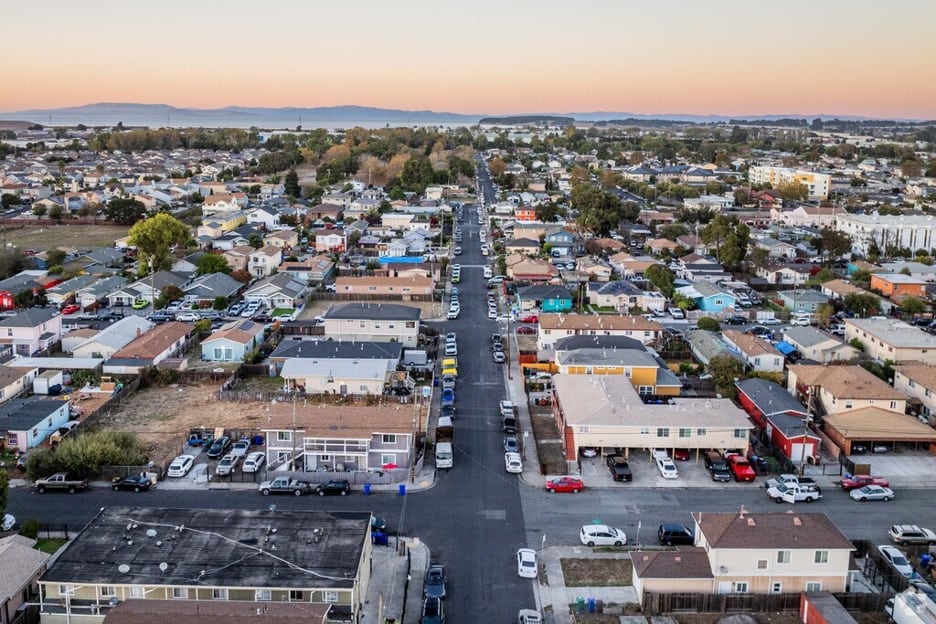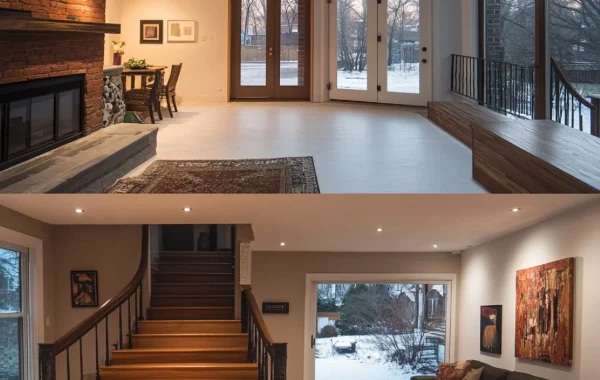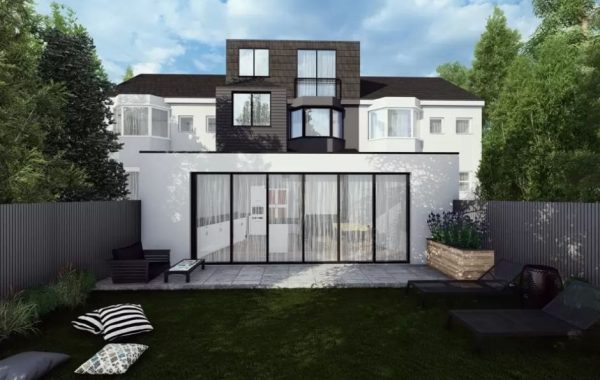Richmond South: Redefining Spaces with Change of Use – A Fresh Approach to Urban Transformation
Richmond South, a charming enclave of leafy streets, historic buildings, and modern developments, is constantly evolving to meet the needs of its vibrant community. Amidst this transformation, one concept stands out: Change of Use. While the notion of repurposing buildings might seem like a mere technicality, in this part of London, it is nothing short of a revolution. From redeveloping old shops into stylish loft apartments to converting traditional houses into hip cafés or offices, the Change of Use process offers a unique way to breathe new life into underutilized spaces. In this article, we take a deep dive into the fascinating world of Change of Use in Richmond South, unveiling its significance, challenges, and incredible potential.
Why Richmond South is the Ideal Canvas for Change of Use
Richmond South’s diverse architecture, eclectic community, and strategic location make it a prime candidate for reimagining spaces. As urbanization continues to rise, cities like London increasingly face pressure to maximize the utility of existing properties rather than building from scratch. Change of Use is a way to repurpose buildings for new functions that reflect modern needs. Whether it’s transforming a charming Georgian townhouse into a boutique hotel or turning a forgotten warehouse into a lively creative studio, Richmond South is witnessing a wave of change, one that combines functionality with aesthetic appeal.
But why is Richmond South particularly well-suited for this type of transformation? Here’s why:
Rich Cultural Heritage Meets Modern Demand: The area is home to a blend of classic Victorian houses, mid-century buildings, and newly constructed flats, each with its own history and charm. This diversity offers endless opportunities for reinvention. The unique character of these structures, combined with the growing demand for flexible spaces, creates the perfect environment for Change of Use.
An Evolving Community: Richmond South attracts a mix of professionals, families, and creatives, all with varied needs. From young entrepreneurs seeking live-work spaces to established businesses looking for boutique offices, the demand for hybrid spaces is high. This shift in lifestyle calls for properties that can accommodate both residential and commercial purposes seamlessly.
Strategic Location: Situated within easy reach of central London, Richmond South benefits from excellent transport links and proximity to green spaces like Richmond Park. The demand for properties in this area continues to rise, and Change of Use provides a way to make the most of available space while catering to this growing interest.
The Versatility of Change of Use: Endless Possibilities for Richmond South
Change of Use offers a world of possibilities for developers, investors, and homeowners looking to make the most of their properties in Richmond South. Here are some of the most exciting transformations currently taking place:
Residential to Creative Studios: One of the most innovative changes of use in Richmond South is the conversion of residential properties into creative studios or workshops. As the demand for flexible workspaces grows, many are turning their homes into vibrant environments that foster creativity and collaboration. From artists’ studios to design hubs, this transformation is redefining what it means to work from home.
Shops to Social Spaces: The retail landscape in Richmond South, as in many parts of London, is rapidly changing. As online shopping continues to rise, traditional shops are increasingly being converted into cafes, restaurants, and social hubs. A once traditional shopfront could now be a lively café serving as a gathering point for locals, or a community-driven space that fosters connection, creating a fresh dynamic within the neighborhood.
Commercial to Residential Conversions: With the continued shortage of affordable housing in London, the Change of Use process allows for the transformation of underused office spaces or warehouses into new residential units. These conversions not only increase the housing stock in Richmond South but also add to the architectural variety of the area, blending the old with the new. Office spaces might be turned into stylish loft apartments or converted into co-living spaces that appeal to younger generations.
Churches to Cultural Venues: Richmond South is home to a number of churches and historic buildings that are no longer used for their original purpose. Through Change of Use, these spaces are being reimagined as venues for culture, arts, and community engagement. From theaters and galleries to music venues and yoga studios, these buildings are finding new life and becoming integral parts of the local cultural scene.
Pubs and Bars to Microbreweries: The pub culture in Richmond South is an integral part of its heritage. However, the demand for more niche, bespoke experiences has seen a shift towards microbreweries and craft beer bars. Old pubs are being given a new lease of life as artisanal beer spots, where local brewers can share their creations with an enthusiastic crowd. These establishments contribute not only to the community’s social life but also to the area’s economic vibrancy.
The Process: Understanding the Legal and Regulatory Framework
While the potential of Change of Use in Richmond South is clear, navigating the legal and regulatory framework can be complex. Before embarking on any transformation, property owners must understand the key steps involved:
Application Submission: The first step in the process is submitting a detailed planning application to the London Borough of Richmond upon Thames. This application should clearly outline the proposed Change of Use, providing information on the building’s current use, the desired change, and how it aligns with local planning policies. In areas like Richmond South, where preservation of character is essential, the application must address any potential impact on the neighborhood.
Public Consultation: Change of Use applications often require a public consultation process, particularly in a close-knit community like Richmond South. This gives local residents, business owners, and stakeholders the opportunity to voice their opinions and concerns. The feedback gathered during this stage can help shape the final proposal and ensure that the development fits within the broader community context.
Environmental and Heritage Considerations: Richmond South’s conservation status means that any Change of Use must take into account the area’s historic value. Properties in conservation areas may have additional restrictions on external modifications or structural changes. Environmental considerations are also critical, particularly in a location surrounded by green spaces like Richmond Park. Sustainable design practices, energy efficiency, and minimizing environmental impact must be central to any proposal.
Building Regulations: Once planning permission is granted, developers must comply with building regulations, ensuring that the repurposed property meets health, safety, and accessibility standards. Depending on the scale of the change, structural works, fire safety measures, and insulation may be required.
Challenges to Consider
Despite the potential, Change of Use comes with its own set of challenges, particularly in a desirable area like Richmond South:
Zoning Restrictions: Some areas may have strict zoning regulations that limit the types of uses allowed in a given space. For example, certain residential areas may have restrictions on the types of businesses that can operate within them, requiring additional permissions for commercial activities.
Market Viability: Not every Change of Use will lead to immediate success. Property owners must conduct thorough market research to ensure that the transformed space meets the demands of the community. For instance, while there may be a strong demand for co-working spaces in one part of Richmond South, another area might fare better with boutique shops or residential conversions.
Cost Implications: The financial cost of converting a building can be substantial, especially when taking into account planning fees, construction work, and compliance with building regulations. Property owners must be prepared for the financial investment required to complete the transformation and make sure the returns justify the expenditure.
Community Impact: While Change of Use offers numerous benefits, it’s important to ensure that the transformation aligns with the needs of the community. An over-saturation of similar spaces—whether cafes, offices, or residential units—could create imbalance, leading to underutilized spaces. Thoughtful planning and attention to the diversity of needs in Richmond South are essential.
Conclusion: The Future of Richmond South – A Canvas for Innovation
The future of Richmond South is being shaped by the Change of Use process, where buildings are repurposed to meet the evolving needs of the community. This process not only breathes new life into old properties but also plays a critical role in enhancing the area’s vibrancy and diversity. For property owners, developers, and investors, understanding the potential of Change of Use offers the chance to be part of this exciting transformation. As Richmond South continues to grow and adapt, the possibilities for creative repurposing are endless—offering a unique opportunity to shape the future of one of London’s most desirable neighborhoods.





